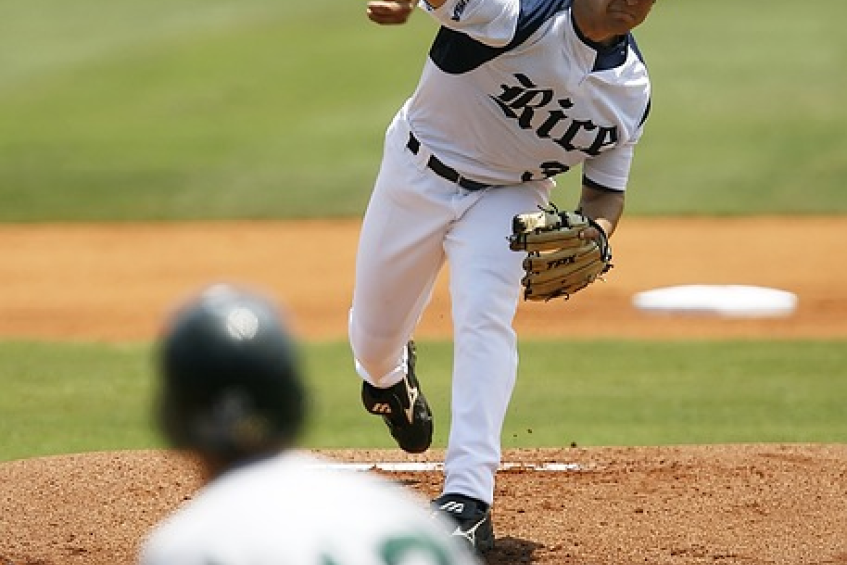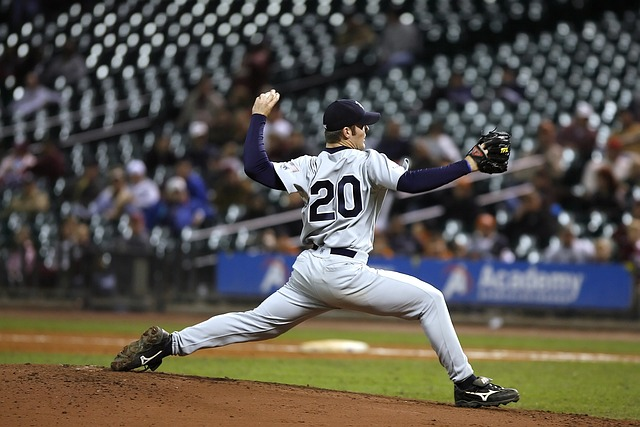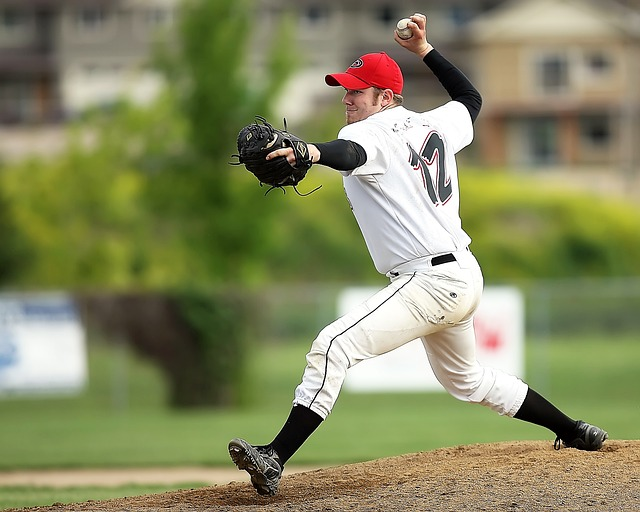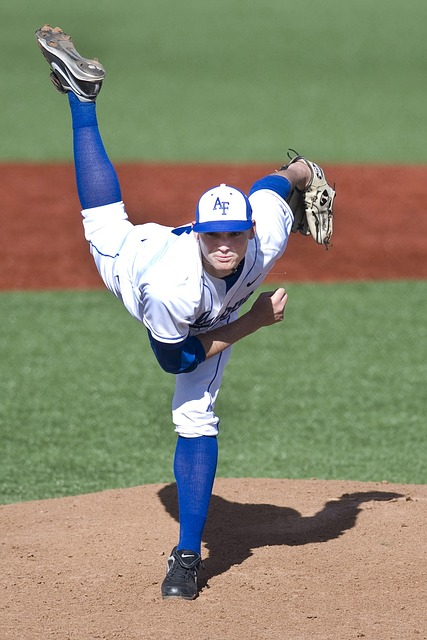
Hello to all baseball enthusiasts, amateur pitchers, or just anyone intrigued by the fascinating world of baseball. I'm here today to shed light on a question that has often been in the shadows - "Is pitching bad for your arm?" This question has sparked numerous debates, and it's high time we settled it. As a passionate baseball fan and a self-proclaimed baseball expert, I have delved deep into the realm of baseball mechanics to provide you with the best answer.
Pitching a baseball, be it in a neighborhood game or in a packed major league stadium, is a uniquely strenuous activity on the human body. It's an amalgamation of strength, skill, precision, and yes, a certain amount of strain on the arm. But the question we're exploring is not whether pitching involves strain - because it undeniably does - but whether that strain is necessarily 'bad' for your arm.
In our journey today, we'll venture through the mechanics of pitching, the strain it puts on the arm, the most common injuries, and ultimately, whether all this pitching is bad for your arm. We'll pay particular attention to our throwing arm and how the different components like the upper arm, elbow joint, and shoulder joint come into play. So, whether you're a budding baseball pitcher, a concerned parent, or simply someone intrigued by this question, stay with me as we navigate this intricate journey.
Grab your baseball caps, folks. Let's play ball!

Let's start with the basics - what exactly happens when a baseball pitcher hurls that ball towards the home plate? When you watch a baseball game, the movement looks fluid and almost effortless, but underneath that smooth exterior lies a complex interplay of biomechanics and sheer power. The pitcher's arm, particularly the throwing arm, plays a crucial role in this process.
A lot of force goes into throwing a baseball at high speed, and that force gets channeled through your arm. When a pitcher throws a ball, they are using almost every muscle in their body, from their feet all the way up to their fingertips. It's an incredibly coordinated movement that happens in just about a second, and much of that force gets concentrated in the upper arm, the shoulder, and the elbow.
The baseball pitchers' shoulder acts as the fulcrum, the elbow guides the direction, and the wrist adds that final flick to get the ball spinning just right. These three joints endure an enormous amount of stress during each pitch, which leads to what many pitchers describe as "arm pain." This pain is a clear sign that the body is dealing with a high amount of stress.
Now, baseball injuries are not uncommon, and pitching can lead to a range of them. When a baseball is pitched, the elbow joint, in particular, experiences what's called valgus stress. This is the inward bending or twisting force that the elbow endures when the arm is fully extended during a pitch. This kind of stress can lead to micro-tears in the ulnar collateral ligament (UCL) located inside the elbow. Repeated stress can even cause this ligament to completely tear, leading to the dreaded Tommy John surgery named after the first major league pitcher who underwent this procedure.
Throwing injuries can also include muscle strains, ligament sprains, fractures, dislocations, and even nerve damage. "Dead arm" syndrome, another term you might have heard, is also one such injury. It's a condition that arises from excessive use of the arm leading to tiredness and a decrease in pitch velocity.
As we delve deeper into this topic, you'll begin to see how the various components of the arm work together in harmony (or disharmony, in the case of an injury) during a pitch. Understanding these mechanisms is key to answering our main question - "Is pitching bad for your arm?"
To truly grasp the impacts of pitching on the arm, it's necessary to understand the key parts of a pitcher's arm, their functions, and how they coordinate when delivering a pitch. So let's put on our imaginary lab coats and delve into the anatomy of a pitcher's arm.
Starting with the shoulder joint, the part that anchors the arm to the body. The shoulder joint, or the shoulder socket, is a ball-and-socket joint, which offers a wide range of motion. This flexibility is crucial for a pitcher to wind up and release the ball at different angles. Inside this joint, we find the rotator cuff, a group of muscles and tendons that provide stability and allow the complex movements required during a pitch.
Moving down, we have the upper arm bone, or the humerus, which connects the shoulder to the elbow. This bone plays a role in providing the force necessary for pitching the ball. However, the elbow joint is where much of the magic happens. This hinge joint, connecting the upper arm to the forearm, allows for the bending and extending necessary to whip a pitch at high speed.
Within the elbow joint, you'll find the ulnar collateral ligament (UCL). This ligament is critical to the stability of the elbow and plays a significant role in transferring the force from the body to the baseball. It's also this ligament that often falls victim to the high-stress loads from pitching, leading to potential injury and, in severe cases, requiring Tommy John surgery.
Then there's the phenomenon of "dead arm," a term used in baseball circles to describe a condition where a pitcher experiences a sudden decrease in their throwing velocity without any accompanying pain. This can be the result of fatigue or overuse and signifies that the arm muscles, particularly in the shoulder and elbow, are not recovering adequately between pitching sessions.
Having taken a tour of a pitcher's arm, it's evident that pitching a baseball is no simple task. It's a high-stakes game where strength, speed, and precision are constantly trading blows with potential fatigue, overuse, and injuries.
There's no denying that the act of pitching a baseball places a significant load on the arm. The constant torque, the repeated motions, and the high-intensity throws can lead to wear and tear, fatigue, and even serious injuries. We've already uncovered this reality in our exploration of the strains of pitching and common injuries among baseball pitchers. But to paint a complete picture, we must also acknowledge the rewards that come with pitching.
Pitching is not just a role on the baseball field; it's a craft, an art form even. It is the centerpiece of the baseball game, dictating the pace, the strategy, and often the outcome. It's what separates baseball from other sports, lending it a unique charm and challenge.
The physical demands of pitching can be intense. However, it also offers the opportunity for athletes to test and stretch their limits. The art of perfecting the pitch is about honing one's strength, flexibility, and coordination. It's a demanding endeavor, but it's also immensely satisfying and rewarding.
Every time a pitcher steps onto the mound, they know there's a chance they might experience arm pain or exacerbate a nagging injury. They are aware of the elbow injuries, shoulder pain, and the potential for a "dead arm" episode. Yet, they persist, driven by the thrill of the game, the camaraderie, and the deep-rooted love for baseball.
The high throwing velocity achieved by Major League pitchers is a testament to their skill and dedication. It is awe-inspiring, witnessing them achieve what seems to be the peak of human performance. Still, it's crucial to remember that these feats come with a potential cost to their arm health.
In the face of these risks, it's the preventative measures, recovery routines, and effective treatment plans that play a huge role in a pitcher's career. They make it possible for pitchers to take the mound day after day, season after season.
With the right precautions and care, many of these pitching-induced ailments can be managed and even prevented, thus enabling a pitcher to continue doing what they love: commanding the mound, hurling fastballs, outwitting the batter, and steering their team to victory.

Now that we understand the potential risks and rewards associated with pitching, it's time to explore how to prevent these injuries and treat them if they do occur. Just like in any physical activity, prevention is better than cure, especially when we talk about a pitcher's arm.
One of the main culprits behind arm injuries in pitchers is excessive use. It is essential to listen to your body and give it the rest it needs. This may include adhering to pitch counts and giving your arm a break during the off-season. Remember, rest is a vital component of an athlete's training regimen, not a sign of weakness.
Next, we move to pitching mechanics. Every pitch is a complex series of body movements, and any deviation can increase the risk of injury. Perfecting these mechanics under the guidance of a skilled coach can not only improve your pitching performance but also protect your arm from undue strain.
Warm-ups cannot be stressed enough. A well-structured warm-up routine prepares your arm for the strenuous task of pitching, reducing the likelihood of acute injury. This should be combined with a consistent pregame routine that gets you both physically and mentally ready for the game.
Now, let's talk about arm exercises. Regular strength and conditioning exercises targeting the arm, especially the upper arm and shoulder joint, can significantly reduce the risk of overuse injuries. Incorporate exercises focusing on both the shoulder socket and the elbow joint to improve overall arm health.
Just as crucial is the proper care of your arm after the game. This includes icing your arm to reduce inflammation and pain, followed by heat therapy to promote blood flow and healing. Anti-inflammatory medications can also be beneficial, but remember, they should always be used under medical supervision.
Now, if you do sustain an injury, treatment should be initiated as soon as possible to prevent further damage. This may include physical therapy, rehabilitation exercises, and in severe cases, surgeries like Tommy John. A qualified physical therapist can devise a personalized treatment plan based on the type and extent of your injury.
Remember, a pitching career doesn't have to be fraught with arm pain and injuries. With proper care and precaution, you can keep your throwing arm healthy and continue to enjoy the sport you love. It's all about balance, knowing your limits, and taking care of your body.
The world of baseball pitching is filled with both risks and rewards. But equipped with this knowledge, you can strive to minimize those risks while still reaping the rewards. So, take care of that arm, and keep those fastballs coming!
We're rounding the bases and coming home with our last section up next, where we'll answer some of the most frequently asked questions about pitching and arm health.
Keeping a pitcher's arm healthy involves a blend of rest, proper pitching mechanics, consistent warm-ups, strength and conditioning exercises, and post-game care such as icing and heat therapy. Regular check-ups with a physical therapist can also be beneficial to monitor arm health and address any emerging issues early.
All pitches place some degree of stress on the arm, but breaking balls like sliders and curveballs have been associated with a higher risk of arm injury. These pitches require a significant twisting motion of the arm, which can put strain on the elbow and shoulder joint.
Yes, throwing a curveball can potentially hurt your arm if done incorrectly or excessively. The twisting motion used to throw a curveball can put a lot of strain on the ulnar collateral ligament in the elbow.
Fastballs, especially when thrown at high velocity, do place strain on the pitcher's arm. However, proper pitching mechanics, warm-ups, and arm care can mitigate the risk of winding up on the injured list.
Icing the arm after pitching can help reduce inflammation and alleviate pain. However, it's not a one-size-fits-all answer. Some believe it to be beneficial, while others argue that it can restrict blood flow and slow down the healing process. Always consult with a medical professional or physical therapist to determine what's best for your individual needs.
The most common arm injury for pitchers is damage to the ulnar collateral ligament, often requiring Tommy John surgery. Shoulder injuries, including rotator cuff tears and labral tears, are also common.
A common elbow injury in pitchers is a tear in the ulnar collateral ligament, often resulting from the excessive strain placed on the inner elbow during pitching. This condition is sometimes referred to as "Pitcher's Elbow."
The repeated high-stress motion of pitching can lead to a range of issues in a pitcher's arm, from inflammation and fatigue (often called "dead arm") to serious injuries requiring surgery.
The arm that a pitcher uses to throw the ball is often referred to as the "pitching arm" or "throwing arm."
Pitching places significant stress on the arm, particularly the elbow and shoulder joints. Over time, this can lead to inflammation, pain, and various types of injuries. However, with proper care, conditioning, and rest, many pitchers maintain their arm health throughout their careers.

Pitching a baseball game is an art and science, one that brings its share of joy and challenges. The physical demand on the throwing arm is significant, but with proper understanding, care, and prevention strategies, the risks associated with pitching can be minimized. A crucial part of this process involves understanding the mechanics of the arm, the type of injuries that may occur, and how to prevent them.
It's worth repeating that prevention is the best way to manage the risks associated with pitching. Paying attention to your body, employing correct pitching mechanics, warming up properly, taking rest seriously, and incorporating strength exercises into your routine are key to protecting your arm. If injuries do occur, prompt attention and appropriate treatment can often lead to full recovery.
In the end, the question, "Is pitching bad for your arm?" doesn't have a simple answer. Yes, pitching puts your arm under stress, but that doesn't mean you're destined for injury. Knowledge is power, and being aware of the risks, you can implement strategies to protect and care for your arm, keeping you in the game for years to come.
Whether you're a youth baseball player or a major league pitcher, the joy of throwing a perfect pitch is unrivaled. As long as you respect the limits of your body, continue to perfect your form, and take care of your arm, you'll be able to experience the thrill of being on the pitcher's mound, game after game.
Thank you for joining me on this exploration of the world of baseball pitching and arm health. Remember, play hard, play smart, and take care of your arm, because every great pitcher knows – it's your most important tool in the game.
Stay tuned for more baseball insights and tips, right here on this blog. Until next time, keep pitching!
Chris Sloan is a former baseball league commissioner and travel baseball coach who has made significant contributions to the sport. In 2018, he founded selectbaseballteams.com, a website that helps parents find youth and travel baseball teams in their local areas. Since its launch, the website has experienced impressive growth, offering a wealth of resources including teams, news, tournaments, and organizations. Chris's unwavering passion for baseball and his innovative approach to connecting parents with quality baseball programs have earned him a respected reputation in the baseball community, solidifying his legacy as a leading figure in the world of youth and travel baseball.
There are 0 comments on "Is Pitching Bad for Your Arm?"
chandler allen says:
"Hi my name is chandler, i’ve enjoyed..."
On Wanting to tryout for summer ball. as an 18 year old
david graham says:
"With no current MLB team in Canada,..."
On With no current MLB team in
Charles Chavez says:
"To All Coaches: Do you have13U or..."
On Looking for Games